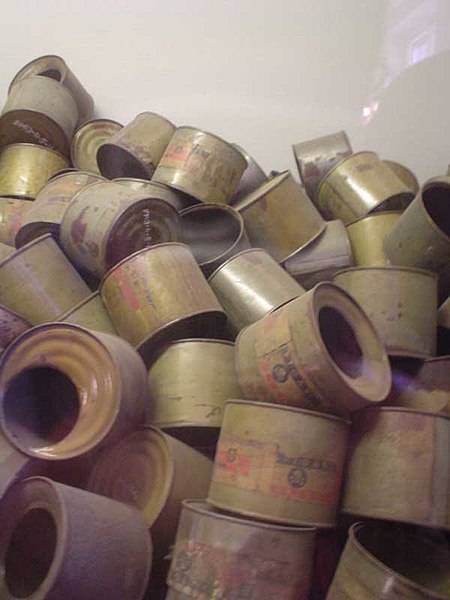Zyklon B was the trade name of a cyanide-based pesticide invented in Germany in the early 1920s. It consists of hydrogen cyanide, as well as a cautionary eye irritant and one of several adsorbents such as diatomaceous earth. The product is notorious for its use by Nazi Germany during the Holocaust to murder approximately 1.1 million people in gas chambers installed at Auschwitz-Birkenau, Majdanek, and other extermination camps.
Zyklon labels from Dachau concentration camp used as evidence at the Nuremberg trials; the first and third panels contain manufacturer information and the brand name, the center panel reads "Poison Gas! Cyanide preparation to be opened and used only by trained personnel"
A fumigation team in New Orleans, 1939. Zyklon canisters are visible.
Empty Zyklon B canisters found by the Allies at Auschwitz-Birkenau in 1945
Rudolf Höss at his trial in Poland, 1947
A gas chamber is an apparatus for killing humans or other animals with gas, consisting of a sealed chamber into which a poisonous or asphyxiant gas is introduced. Poisonous agents used include hydrogen cyanide and carbon monoxide.
Gas chamber at Majdanek concentration camp
Interior of Majdanek gas chamber, showing Prussian blue residue
The former gas chamber at New Mexico State Penitentiary, used only once in 1960 and later replaced by lethal injection.







